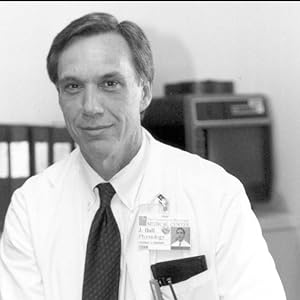John B. West
关于作者
UCSD School of Medicine Logo photo of John B. West John B. West, M.D., Ph.D., D.Sc. Distinguished Professor of Medicine and Physiology School of Medicine University of California, San Diego San Diego, CA 92093-0623A Tel: (858) 534-4192 FAX: (858) 534-4812 E-mail: jwest@ucsd.edu * Formal Curriculm Vitae * Brief Narrative CV * Publications: o Books o Articles John West was born in Adelaide, Australia in 1928. He had the good fortune to attend an excellent high school and developed a love of science, particularly high energy physics. He considered this for a career but as was the custom then (and still is) he moved straight from high school to one of the faculties of the University of Adelaide and, for various reasons, chose medicine. He graduated with a medical degree in 1951 after the six years' course at the age of 23. After a year of residency he moved to London, partly because academic medicine was not well developed in Adelaide at the time, but also because he wanted to see the world. He spent about 15 years in London, mainly at the Royal Postgraduate Medical School, Hammersmith Hospital, initially with Drs. Philip Hugh-Jones and Charles Fletcher. A remarkably serendipitous event occurred in 1956 when the Medical Research Council cyclotron started to produce radioactive oxygen-15. By inhaling this and looking at its disappearance from the lung, it became clear that there was a dramatic topographical inequality of blood flow caused by gravity. The mechanism of this was worked out, and this led to other studies on the effects of gravity on the lung including regional differences of ventilation, gas exchange, and alveolar size. In 1960 he learned that Sir Edmund Hillary was planning a physiological expedition to the Himalayas, and he applied and was accepted in spite of the fact that he had never previously done any climbing. This was the so-called Silver Hut expedition where a small group of physiologists wintered at an altitude of 5800 m (19,000 ft) just south of Everest and carried out an extensive physiological program. Subsequently measurements were extended up to an altitude of 7440 m (24,400 ft) on Mt. Makalu. This began a long interest in high-altitude medicine and physiology and culminated in him leading the 1981 American Medical Research Expedition to Everest during which 5 people reached the summit, and the first physiological measurements on the summit were made. The basic scientific question addressed in these studies is how is it possible for humans to survive in the extreme oxygen deprivation of these great altitudes which are right at the limit of human tolerance. His interest in this field continues to this day with a project on oxygen enrichment of room air at high altitude which promises to be critically important for commuters who need to work at very high altitudes. He also edits a new journal, High Altitude Medicine & Biology. Because of his interest in the effects of gravity on the lung, he thought it would be valuable to study the lung in weightlessness, and took a period of sabbatical leave at the NASA Ames Research Center in 1967-1968. During this time he submitted a proposal to NASA to study pulmonary function in astronauts. This was funded the following year and he enjoyed continuous financial support from NASA until 2006. Experiments were conducted on four Spacelabs in orbit, and on the International Space Station. Of all the organs in the body, the lung is arguably the most vulnerable to gravity, and the basic question here is how is lung function altered by exposure to weightlessness in both the short and long terms. A monograph on pulmonary function in space has recently been published by his group. Dr. West joined the faculty of the University of California San Diego in the spring of 1969 and has been there ever since. His research has ranged over a wide field including an extensive study of ventilation-perfusion inequality in the lung. He continues an interest in the pulmonary circulation and particularly the dilemma of the blood-gas barrier which has to be both extremely thin and immensely strong. When the pressure in the pulmonary capillaries becomes high, or the lung is inflated to large volumes, stress failure of the walls of the capillaries occurs, and this phenomenon is important in a variety of lung diseases. He is addressing the basic biological question of how the blood-gas barrier of the lung is regulated so that it is sufficiently thin for efficient gas exchange yet strong enough to avoid stress failure. Dr. West is a dedicated teacher. He was in charge of the physiology course for first year medical students at UCSD for 35 years and his little red book Respiratory Physiology: The Essentials has been translated into 13 languages and is used all over the world. He also has a strong interest in the history of medicine and has written several books on the subject. His monograph High Life is a standard history of high altitude physiology and medicine. He has developed an archival collection of material in high-altitude medicine and physiology for the special archival library at the University of California, San Diego. Dr. West has had many honors including president of the American Physiological Society, foreign member of the Russian Academy of Sciences, founding fellow of the American Institute for Medical and Biological Engineering, honorary doctorates from the universities of Barcelona, Ferrara and Athens, fellow of the American Academy of Arts and Sciences, and member of the Institute of Medicine of the National Academy of Sciences. Division of Physiology LogoDivision of Physiology Home Page UCSD School of Medicine Home Page Logo UCSD Logo Official Web Page of UCSD Last updated September 12, 2008. ©2008 John B. West. All rights reserved.
阅读完整简历











